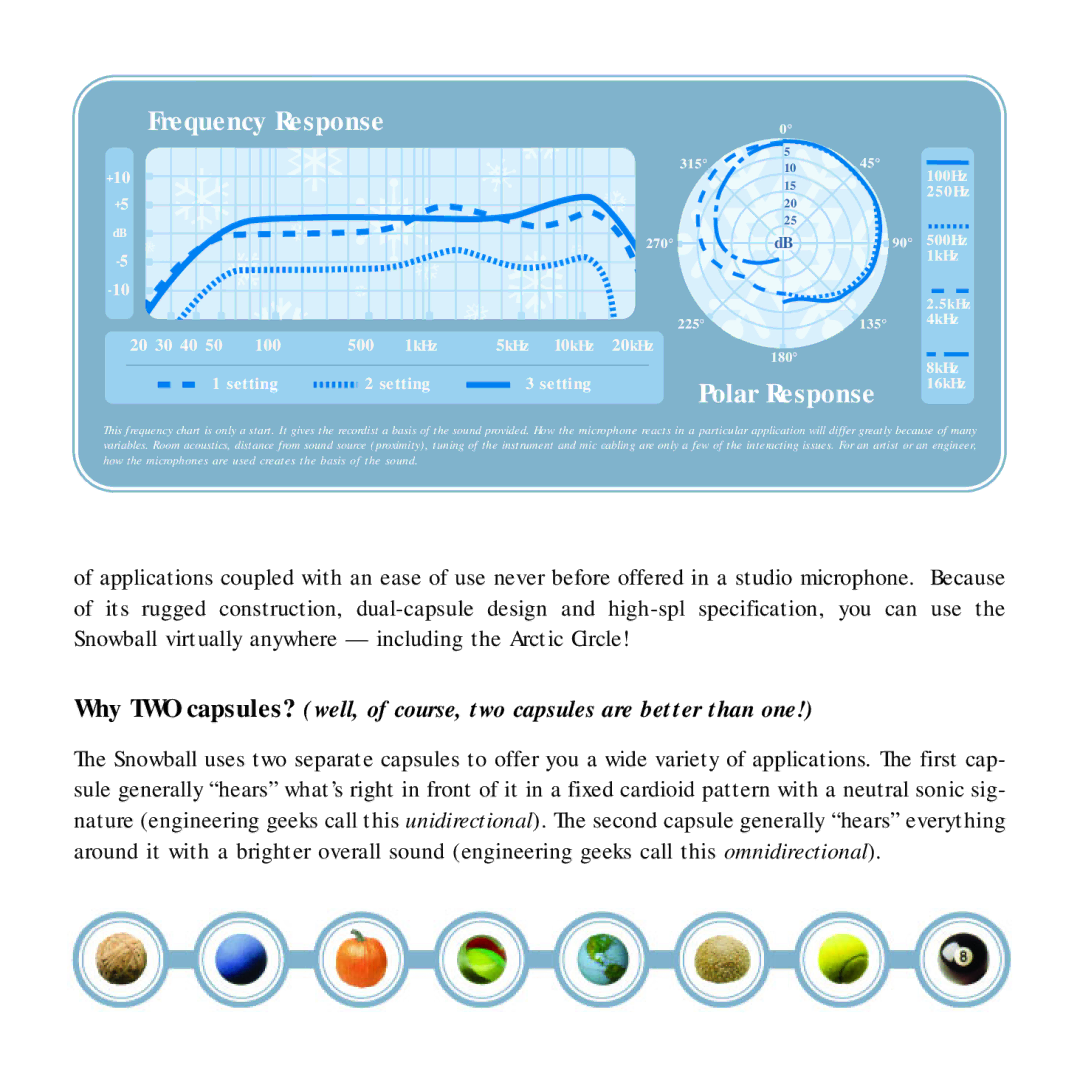
Frequency Response | 0° |
|
|
|
|
|
| 315° | 5 | 45° |
|
+10 |
|
|
|
|
| 10 | 100Hz | ||
|
|
|
|
|
| 15 |
| ||
|
|
|
|
|
|
|
| 250Hz | |
+5 |
|
|
|
|
|
| 20 |
| |
|
|
|
|
|
|
|
| ||
dB |
|
|
|
|
|
| 25 |
|
|
|
|
|
|
| ° | dB | ° | 500Hz | |
|
|
|
|
| 270 | 90 | 1kHz | ||
|
|
|
|
|
|
|
| ||
|
|
|
|
|
|
|
| 2.5kHz | |
|
|
|
|
|
|
|
|
| |
|
|
|
|
|
| 225° |
| 135° | 4kHz |
20 30 40 50 | 100 | 500 | 1kHz | 5kHz | 10kHz | 20kHz | 180° |
|
|
|
|
|
|
|
|
|
| 8kHz | |
1 setting | 2 setting | 3 setting |
|
|
| ||||
Polar Response | 16kHz | ||||||||
|
|
|
|
|
|
| |||
This frequency chart is only a start. It gives the recordist a basis of the sound provided. How the microphone reacts in a particular application will differ greatly because of many variables. Room acoustics, distance from sound source (proximity), tuning of the instrument and mic cabling are only a few of the interacting issues. For an artist or an engineer, how the microphones are used creates the basis of the sound.
of applications coupled with an ease of use never before offered in a studio microphone. Because of its rugged construction,
Why TWO capsules? (well, of course, two capsules are better than one!)
The Snowball uses two separate capsules to offer you a wide variety of applications. The first cap- sule generally “hears” what’s right in front of it in a fixed cardioid pattern with a neutral sonic sig- nature (engineering geeks call this unidirectional). The second capsule generally “hears” everything around it with a brighter overall sound (engineering geeks call this omnidirectional).
